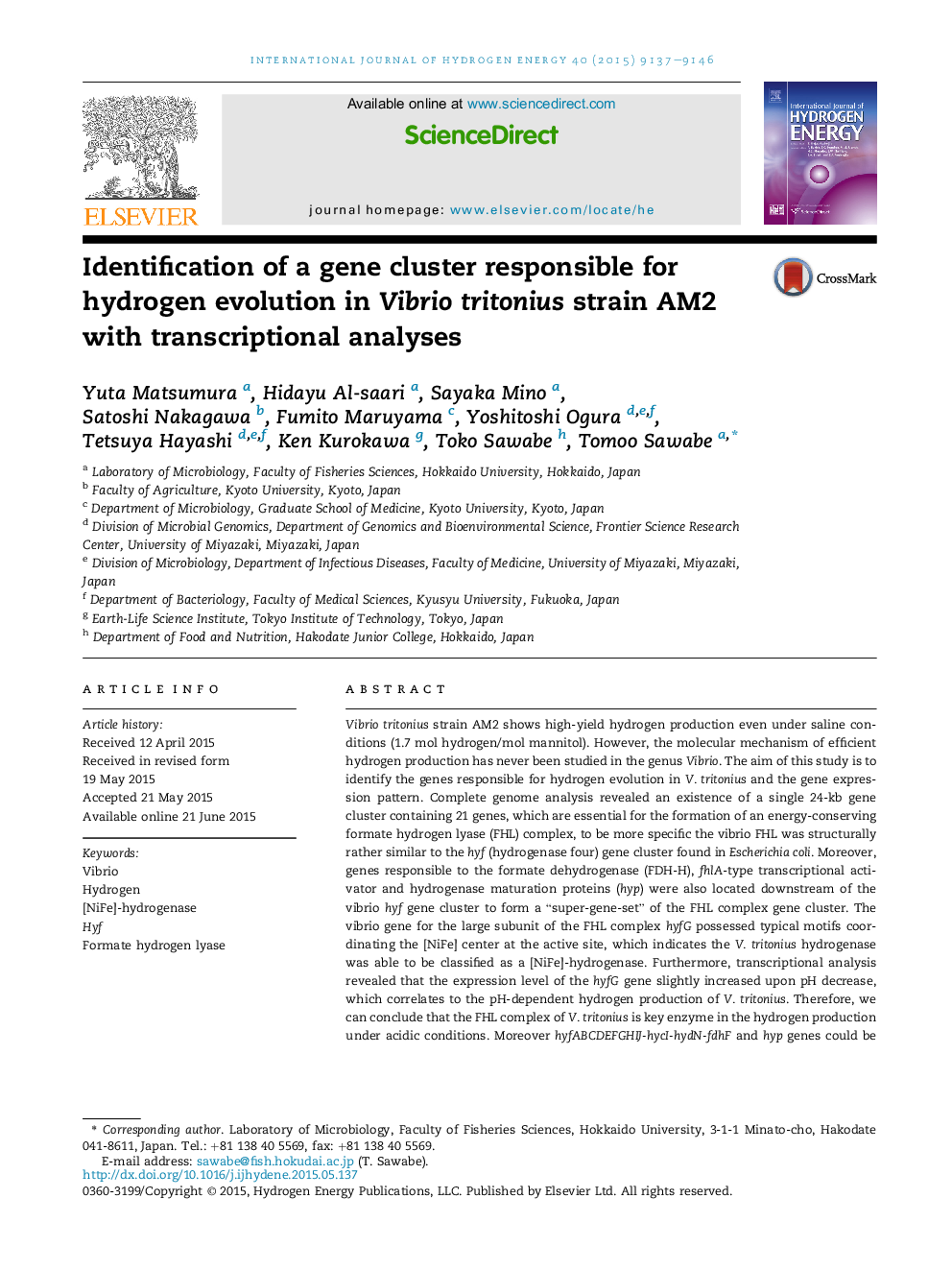| Article ID | Journal | Published Year | Pages | File Type |
|---|---|---|---|---|
| 7715064 | International Journal of Hydrogen Energy | 2015 | 10 Pages |
Abstract
Vibrio tritonius strain AM2 shows high-yield hydrogen production even under saline conditions (1.7Â mol hydrogen/mol mannitol). However, the molecular mechanism of efficient hydrogen production has never been studied in the genus Vibrio. The aim of this study is to identify the genes responsible for hydrogen evolution in V. tritonius and the gene expression pattern. Complete genome analysis revealed an existence of a single 24-kb gene cluster containing 21 genes, which are essential for the formation of an energy-conserving formate hydrogen lyase (FHL) complex, to be more specific the vibrio FHL was structurally rather similar to the hyf (hydrogenase four) gene cluster found in Escherichia coli. Moreover, genes responsible to the formate dehydrogenase (FDH-H), fhlA-type transcriptional activator and hydrogenase maturation proteins (hyp) were also located downstream of the vibrio hyf gene cluster to form a “super-gene-set” of the FHL complex gene cluster. The vibrio gene for the large subunit of the FHL complex hyfG possessed typical motifs coordinating the [NiFe] center at the active site, which indicates the V. tritonius hydrogenase was able to be classified as a [NiFe]-hydrogenase. Furthermore, transcriptional analysis revealed that the expression level of the hyfG gene slightly increased upon pH decrease, which correlates to the pH-dependent hydrogen production of V. tritonius. Therefore, we can conclude that the FHL complex of V. tritonius is key enzyme in the hydrogen production under acidic conditions. Moreover hyfABCDEFGHIJ-hycI-hydN-fdhF and hyp genes could be co-transcribed respectively during the efficient hydrogen production state. Details of the gene cluster are discussed here.
Related Topics
Physical Sciences and Engineering
Chemistry
Electrochemistry
Authors
Yuta Matsumura, Hidayu Al-saari, Sayaka Mino, Satoshi Nakagawa, Fumito Maruyama, Yoshitoshi Ogura, Tetsuya Hayashi, Ken Kurokawa, Toko Sawabe, Tomoo Sawabe,
